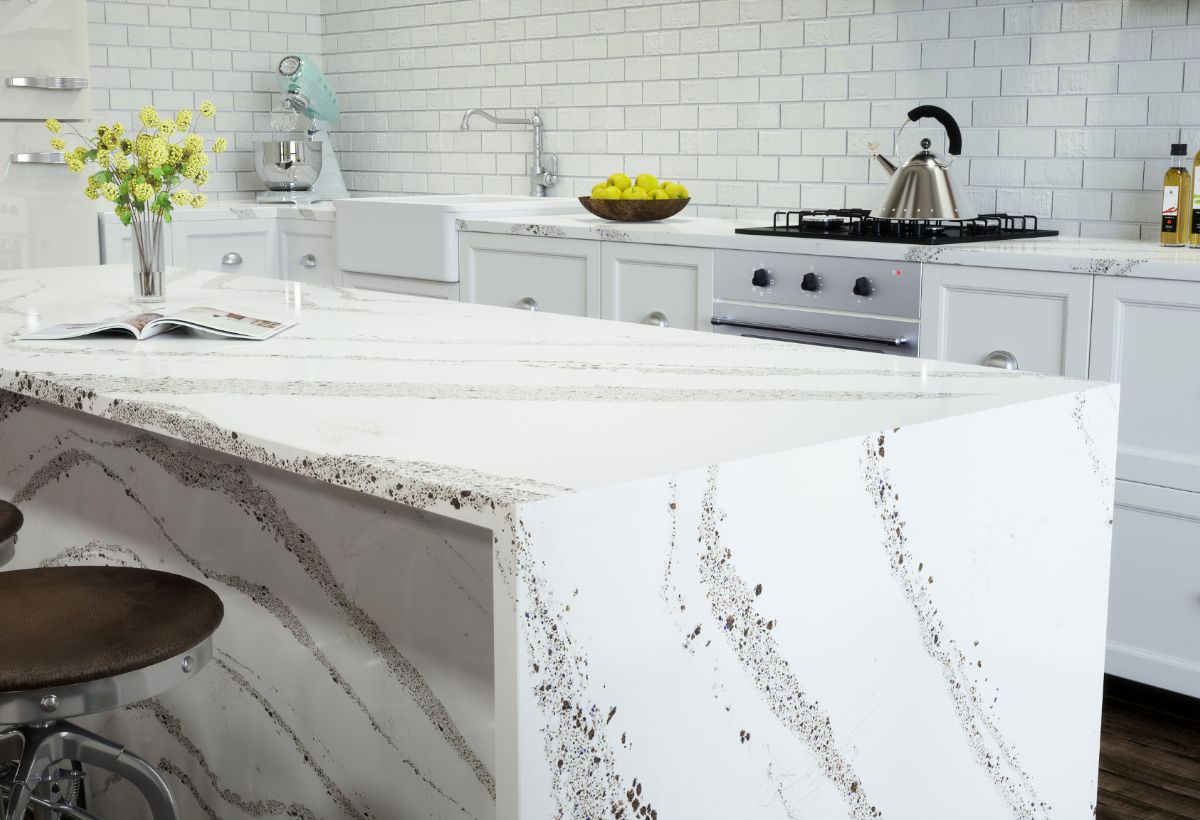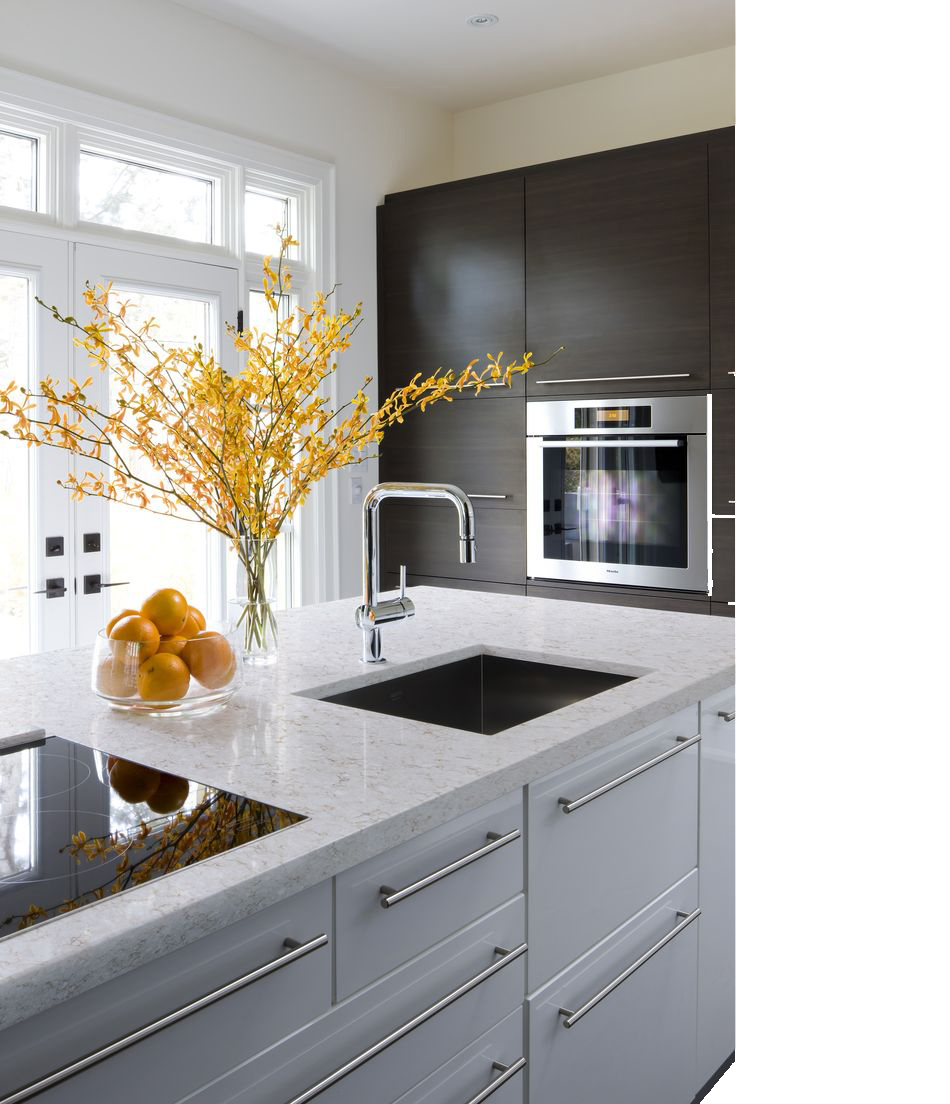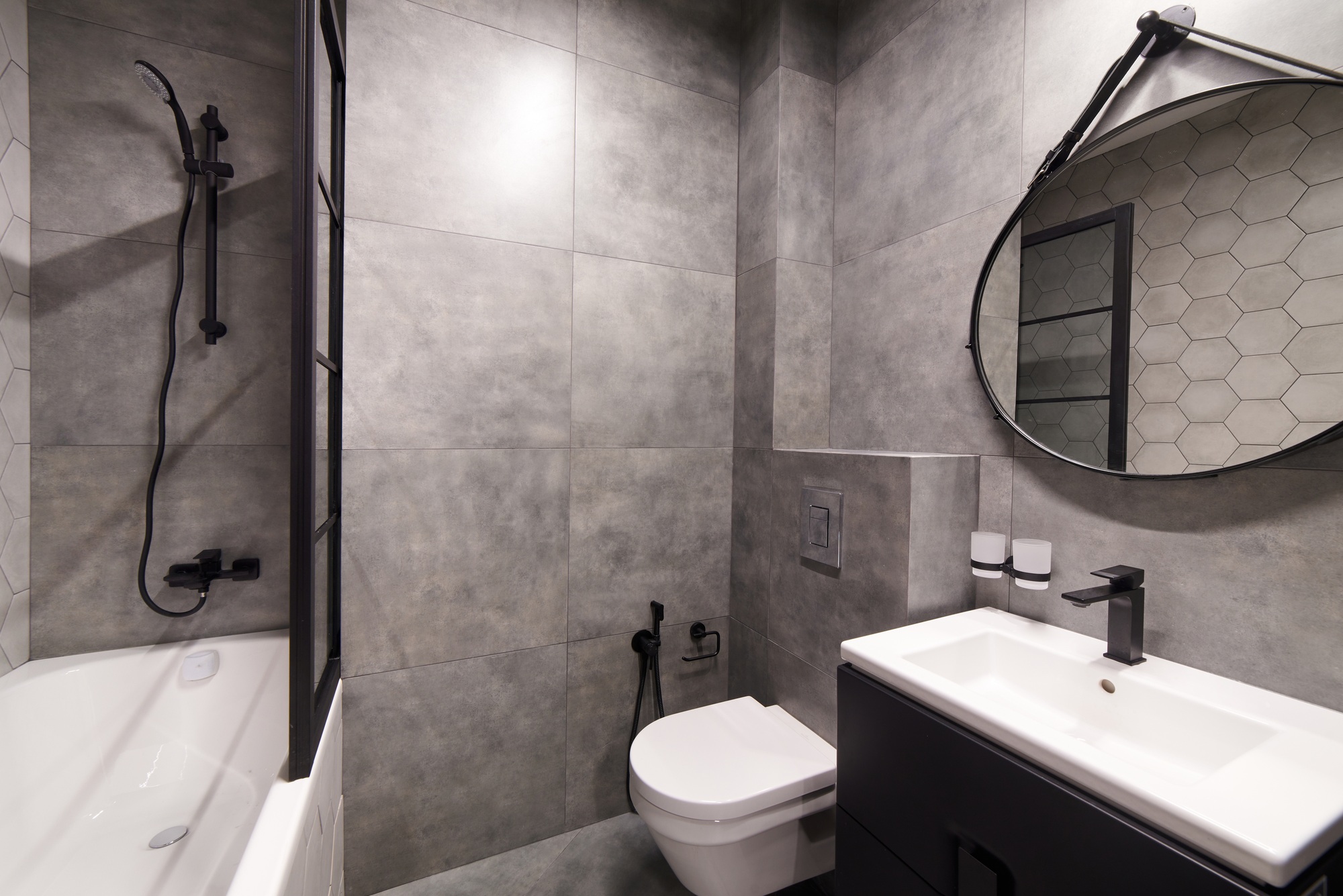Islands have become an increasingly important part of so many kitchen designs in recent years.
Depending on the individual space, they can come in all shapes and sizes. With so many options, how do you go about choosing a kitchen island that works for your design and functional needs?
When it comes to kitchen island countertop material, overhang measurements, corner radius and more, homeowners have questions. But we have the answers. In this blog, we’ll help you make the right choices for this all-important kitchen focal point.
Choosing a Kitchen Island: 5 Key Considerations
#1. Kitchen Island Countertop Material
Many homeowners decide to use the same granite or quartz material for their kitchen island that they have selected for their perimeter countertops.
Other times, though, homeowners select a coordinating material. This is especially common when someone decides to add the kitchen island at a later date.
For example, if you have dark gray or black granite for your perimeter countertops, a neutral, light colored island would pair nicely as a contrasting design element.
#2. Edge Selection
Homeowners treat edge selection the same way as material selection. More often than not, the same edge treatment is used for both the perimeter and the island.
But you can also opt for a different, more decorative edge on the island to add an extra element of detail. Or, take the design to the next level by adding waterfall end panels. This option is more labor-intensive and requires more material, so it’s more expensive.
#3. Countertop Overhang Measurements
Most kitchen islands include base cabinetry, which is great if you need the extra storage space. If a full cabinet base is part of your design, the recommended maximum overhang without needing additional support is 12 inches. For seating, the minimum overhang should be at least 9 inches for knee comfort.
You will need extra support brackets if you want a longer overhang. If your design uses an extra deep overhang and you require support brackets, you should have them in place prior to the install date, ready to accept your beautiful new countertops.
#4. Determining Corner Radius
The corner radius refers to the degree of “roundness” that the countertop corner will have. The corner radius on the side of the seating overhang is usually larger (rounder), providing for ease of movement because of the increased traffic in that area.
You should review the various size options with your templater during your measuring appointment.
#5. Other Creative Shaping & Design Considerations
Some people get creative with the shaping of their island—even making it two levels! Although, most kitchen islands are rectangular because of typical kitchen layouts and practicality.
If space and design permits, some kitchen islands can include a sink or even a cooktop.
Conclusion
The kitchen island is a very popular gathering spot in the home, which means it’s easy to see why it requires so much consideration. It’s truly a worthwhile investment!
Let Eastern Surfaces help make the most of your family time by providing countertops for a fabulous new island. Contact us today!





